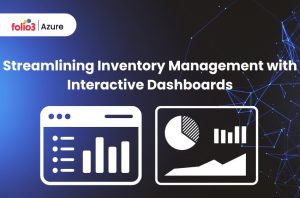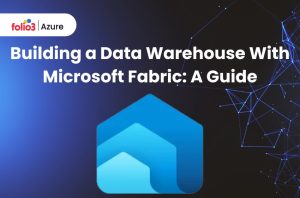Table of Contents
Toggle
In today’s data-driven world, businesses rely on cutting-edge technologies to harness the power of data for making informed decisions and gaining a competitive edge. Two powerful platforms that have emerged as game-changers in this arena are Azure Synapse and DataBricks. They offer robust solutions for data processing, analytics, and machine learning. In this in-depth comparison, we will dive into the intricacies of Azure Synapse vs DataBricks to help you make an informed choice.
Before we delve into the detailed comparison, let’s begin by understanding the fundamentals of Azure Synapse and DataBricks.
What is Azure Data Synapse?
Azure Synapse Analytics, formerly known as SQL Data Warehouse, is Microsoft’s integrated analytics service. It is designed to bridge the gap between data warehousing and big data analytics. Azure Synapse allows you to analyze vast amounts of data in real-time, making it an ideal choice for businesses seeking to derive insights from their data.
Key Features of Azure Synapse
- Unified Analytics: Azure Synapse integrates both on-demand and provisioned resources into a single, unified platform. This allows you to analyze your data using T-SQL queries and Spark.
- Real-time Analytics: With Synapse, you can run real-time analytics on large datasets, enabling businesses to make quick, data-driven decisions.
- Data Integration: It offers seamless integration with Azure Data Lake Storage, Power BI, and other Microsoft services, simplifying data ingestion and transformation.
- Scalability: Azure Synapse provides on-demand scaling, which means you can scale your resources up or down based on your workload requirements.
What is DataBricks?
Databricks is a cloud-based platform that provides an open and collaborative environment for data engineering, data science, and machine learning. It is powered by Apache Spark, making it a versatile choice for organizations looking to leverage big data for analytics and machine learning.
Key Features of Databricks
- Unified Analytics: DataBricks offers a unified analytics platform that brings data engineering, data science, and machine learning together, fostering collaboration across these domains.
- Workspace: It provides a collaborative workspace where data engineers, data scientists, and machine learning practitioners can work together seamlessly.
- AutoML: Databricks includes automated machine learning capabilities, making it easier to develop and deploy machine learning models.
- Scalability: Just like Azure Synapse, DataBricks offers elastic scalability, allowing you to adjust resources as needed.
Azure Synapse vs. DataBricks: What is the Difference?
Now that we have a fundamental understanding of both platforms, let’s compare them across various aspects to help you decide which one aligns better with your business needs.
Data Processing
Azure Synapse vs DataBricks both excel in data processing, but they have different strengths. Azure Synapse is known for its prowess in data warehousing, providing a structured, SQL-based approach to data processing. On the other hand, DataBricks, powered by Apache Spark, is more versatile, handling both structured and unstructured data efficiently. If your primary focus is on structured data and SQL analytics, Azure Synapse might be your go-to choice. However, if you need to work with diverse data types and require complex data transformations, DataBricks could be the better option.
Smart Notebooks
In the realm of data exploration and analysis, smart notebooks play a crucial role. Both Azure Synapse and DataBricks offer notebook environments, but they differ in their capabilities. Azure Synapse leverages Azure Data Studio, providing a familiar SQL-based notebook experience. DataBricks, on the other hand, offers Databricks Notebooks, which are more versatile and support multiple programming languages, including Python, R, and Scala. DataBricks’ notebooks are often preferred by data scientists for their flexibility and compatibility.
Developer Experience
The developer experience is a critical aspect when choosing a data analytics platform. Azure Synapse, being a Microsoft product, seamlessly integrates with other Microsoft services and tools. If your organization heavily relies on the Microsoft ecosystem, this could be a significant advantage. DataBricks, while not as tightly integrated with Microsoft services, offers a more open and collaborative environment. It provides a broader range of programming languages and tools, making it a preferred choice for data engineers and data scientists who work with various technologies.
Architecture
Both Azure Synapse vs DataBricks are designed with scalability and performance in mind. Azure Synapse uses a Massively Parallel Processing (MPP) architecture, which is well-suited for data warehousing and structured data. DataBricks, with its Apache Spark-based architecture, is inherently more flexible and can handle both batch and real-time data processing. The choice between the two should be based on your specific architecture requirements and data processing needs.
Leveraging Data Lake
Azure Synapse and DataBricks can both seamlessly integrate with Azure Data Lake Storage, allowing you to store and analyze data at scale. However, they approach it differently. Azure Synapse includes a built-in feature called “PolyBase” for querying data directly from Azure Data Lake Storage using SQL. DataBricks, being highly compatible with Apache Spark, provides more flexibility in data processing and transformation, making it an ideal choice for organizations with complex data lake requirements.
Machine Learning Development
If your organization is heavily invested in machine learning, DataBricks might be the better choice. It offers integrated automated machine-learning capabilities, making it easier for data scientists to develop and deploy machine-learning models. While Azure Synapse does support machine learning, it might require additional integration with Azure Machine Learning services to match DataBricks’ capabilities.
Azure Synapse vs. DataBricks: Tabular Comparison
To summarize the key differences between Azure Synapse and DataBricks, let’s take a look at a side-by-side comparison:
| Aspect | Azure Synapse | DataBricks |
| Data Processing | Structured data, SQL-based | Structured and unstructured, Spark-based |
| Smart Notebooks | Azure Data Studio | Databricks Notebooks |
| Developer Experience | Microsoft ecosystem integration | Open and collaborative |
| Architecture | MPP architecture | Apache Spark-based |
| Leveraging Data Lake | Built-in PolyBase for SQL | Versatile data processing |
| Machine Learning | Supports ML, might require Azure ML integration | Integrated AutoML capabilities |
Empower Your Data Journey with Folio3
In conclusion, the choice between Azure Synapse and DataBricks depends on your organization’s specific needs and priorities. Azure Synapse is an excellent choice for structured data processing and SQL analytics, particularly if you are heavily invested in the Microsoft ecosystem. On the other hand, DataBricks is a more versatile platform, suitable for organizations that work with a wide range of data types and require collaborative data science and machine learning capabilities.
To make the most informed decision, consider your current technology stack, your data processing requirements, and your team’s skill set. Both Azure Synapse vs DataBricks are powerful tools, and the right choice will empower your data journey and drive your organization’s success in the data-driven world.
For expert guidance and implementation of these data analytics platforms, contact Folio3. We specialize in helping businesses harness the power of data analytics to make informed decisions and drive growth.




